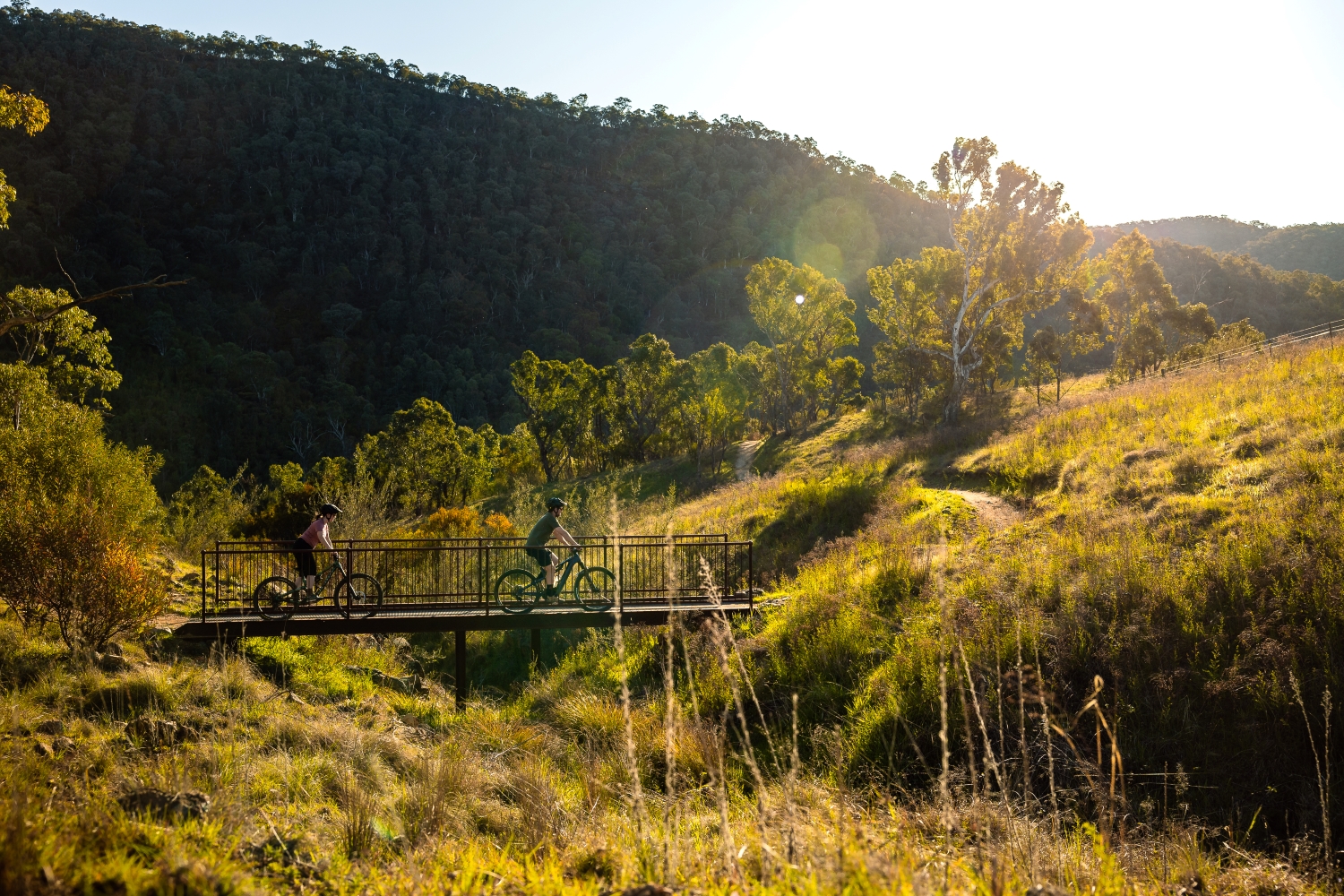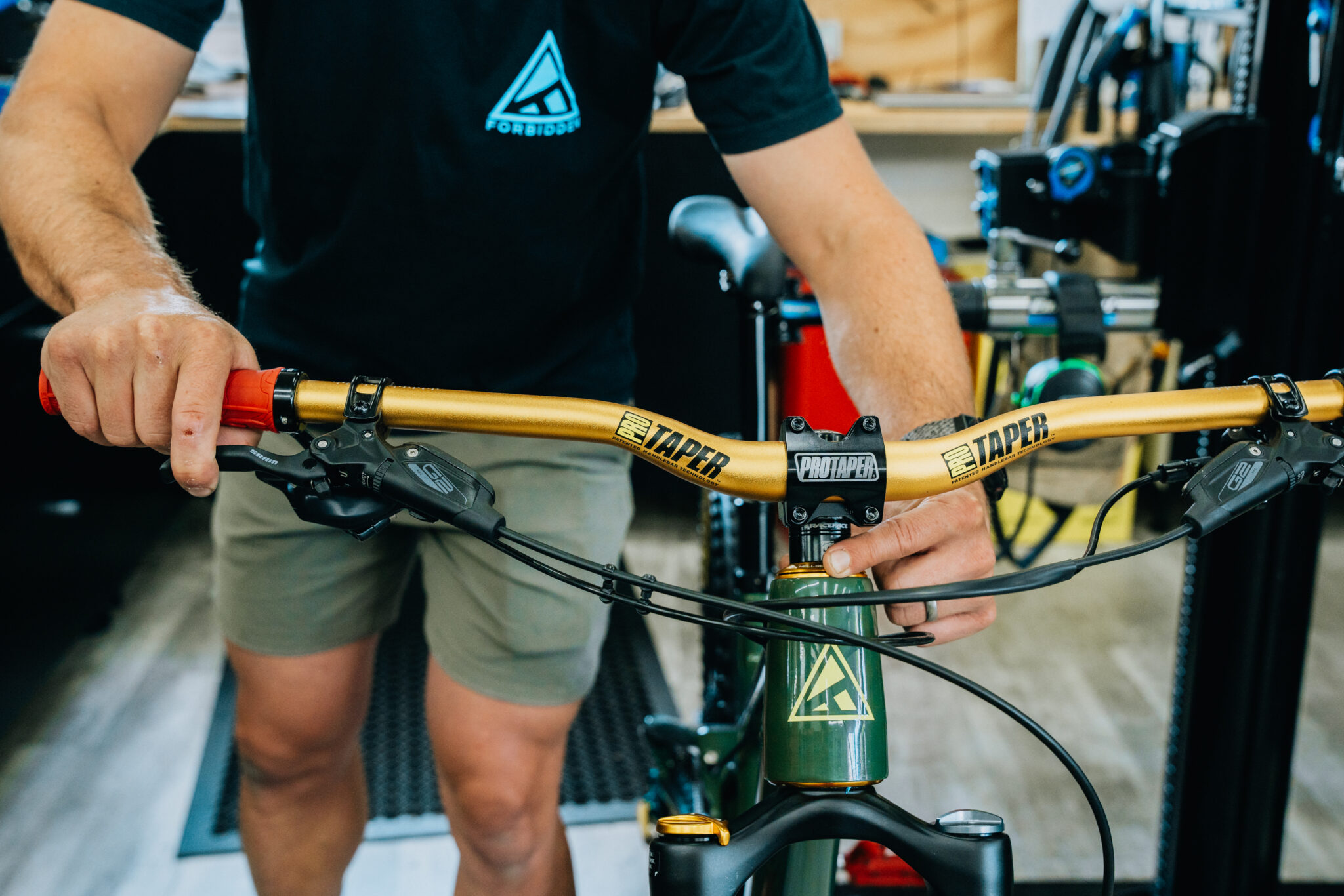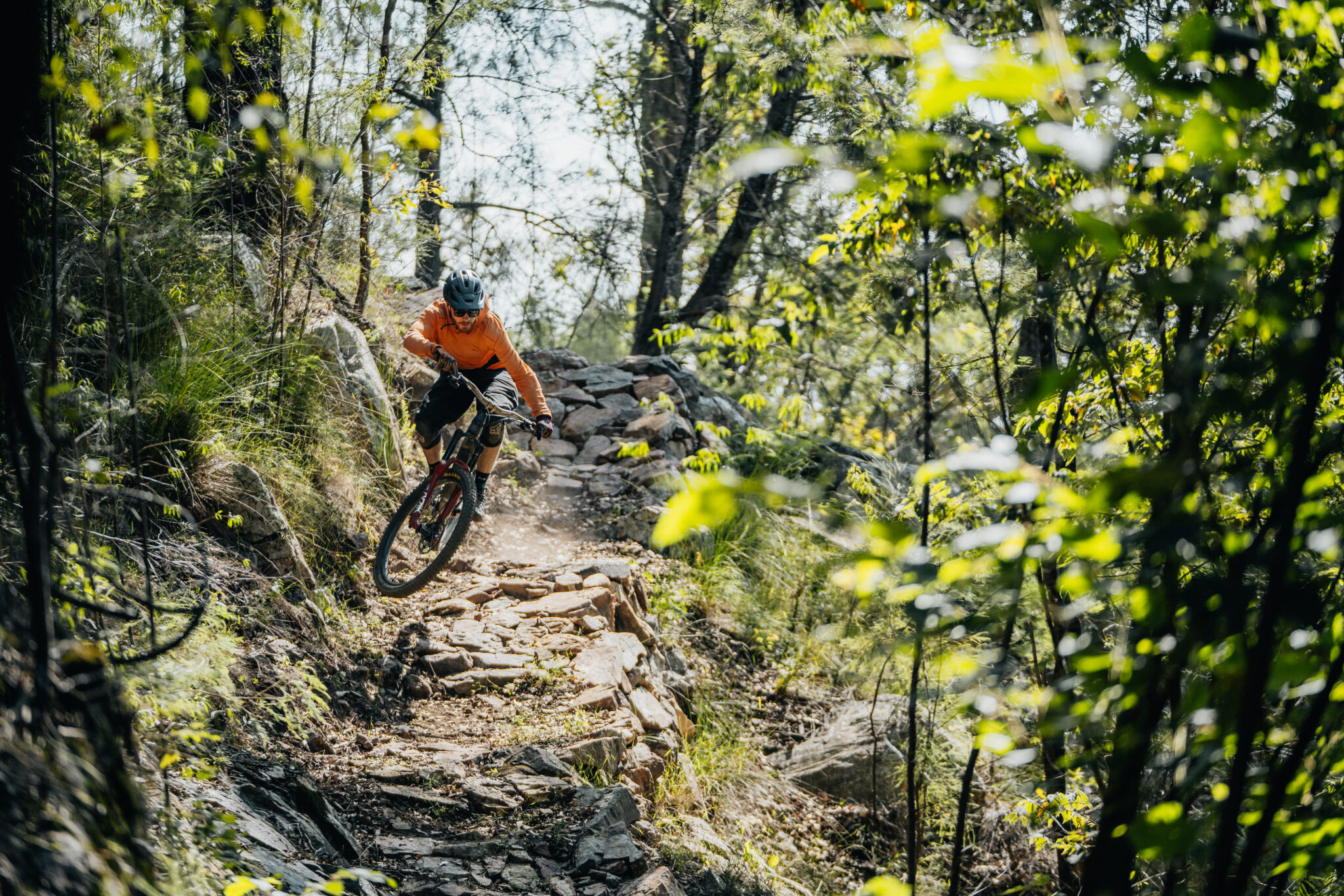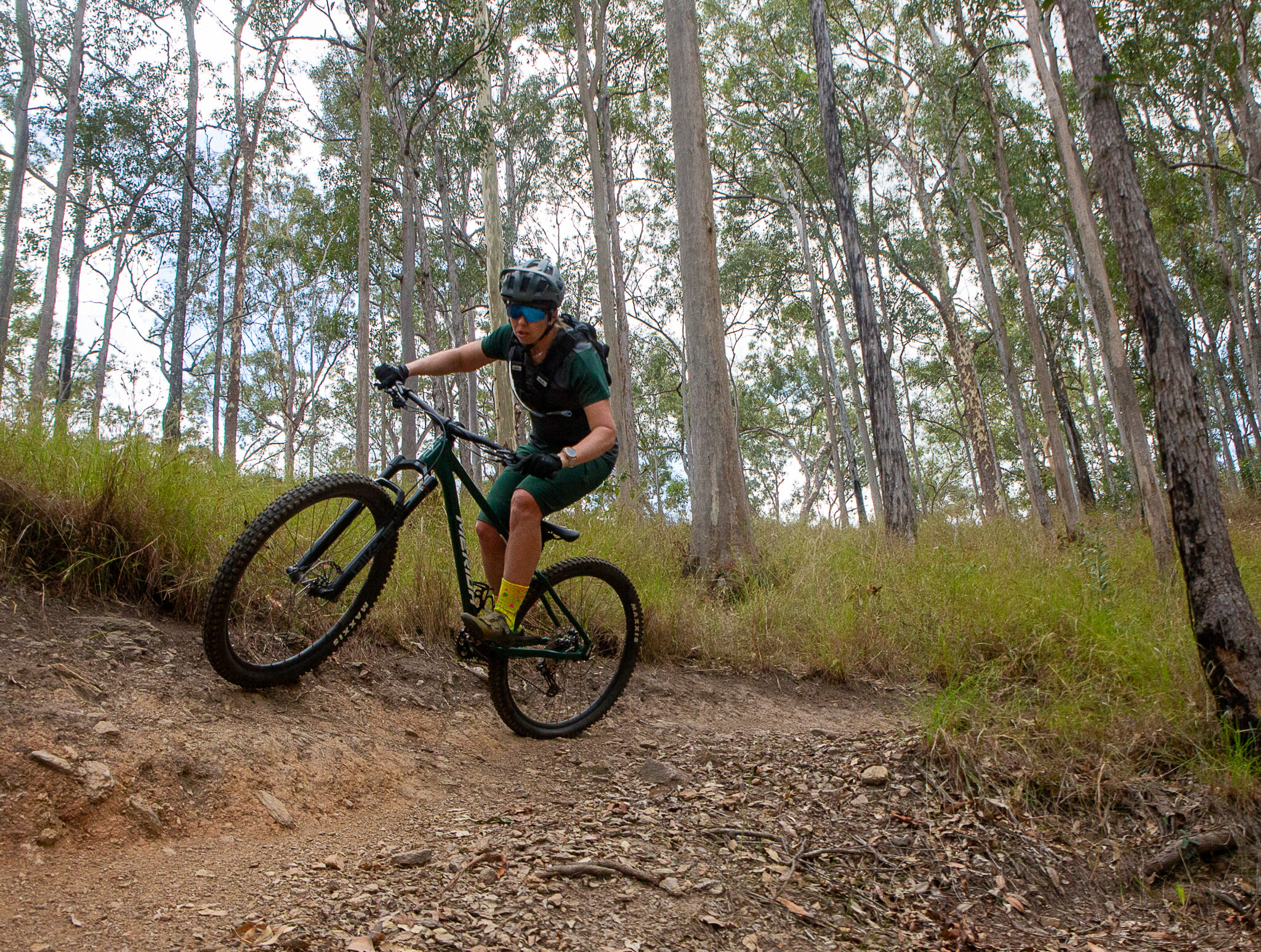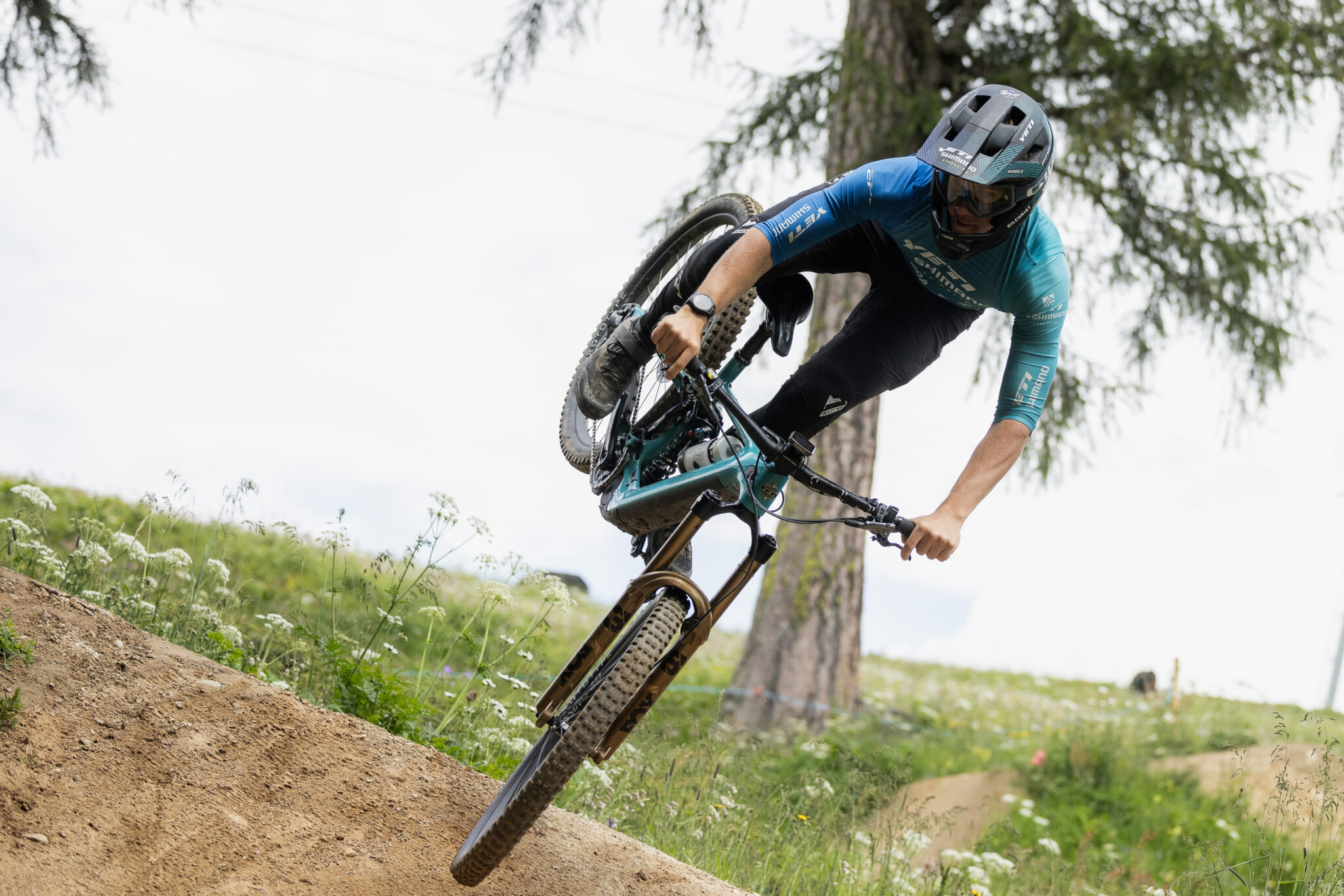THRILLS AND LEARNINGS: Racing the Maydena EDR
While Australia had a taste of the Enduro World Series in the pre-pandemic years, it’s been a long time between drinks.
Words: Georgina von Marburg
Photos: Piper Albrecht
Like many Australians, I had planned to race a few EWS rounds over the last few years, but like many, I was thwarted by international and domestic COVID restrictions.
Well not this year! 2023 saw the big stage return to Australia, and of course Tasmania had to play host. I’m happy to be proven wrong, but it seems Tasmania is the only Aussie state that can appease the length and difficulty demanded by international enduro races. And while Derby is home to huge rock formations, Maydena holds the title for the steepest and longest trails on the island. After an unequivocally fun time at Maydena Enduro Jam last year, I eagerly signed up for the Enduro World Cup (EDR) here. I expected bulk amounts of stoke, but I also reserved a little place in my heart for some healthy fear.
Technicalities
Ok, firstly, the title of this story is slightly misleading because I actually raced the Amateur or “Open” enduro held the day before the actual Pro race. Why? Bear with me while I clear up some technicalities.
Previously known as the Enduro World Series (EWS), this esteemed series was adopted (or hijacked, depending on which way you look at it) by the UCI at the end of 2022 and renamed the Enduro World Cup (EDR). Along with filming rights acquired by Discovery Channel/Warner Bros. (though we are yet to see any such livestream of EDR). Some major changes were made to the rapidly growing discipline. For the first time, the pricey UCI licenses were introduced to the sport and Saturday night “Pro stages” were scrapped. And crucially, instead of qualification being based on Global Rankings, it was based on the actual number of points a rider had accumulated over the previous year.
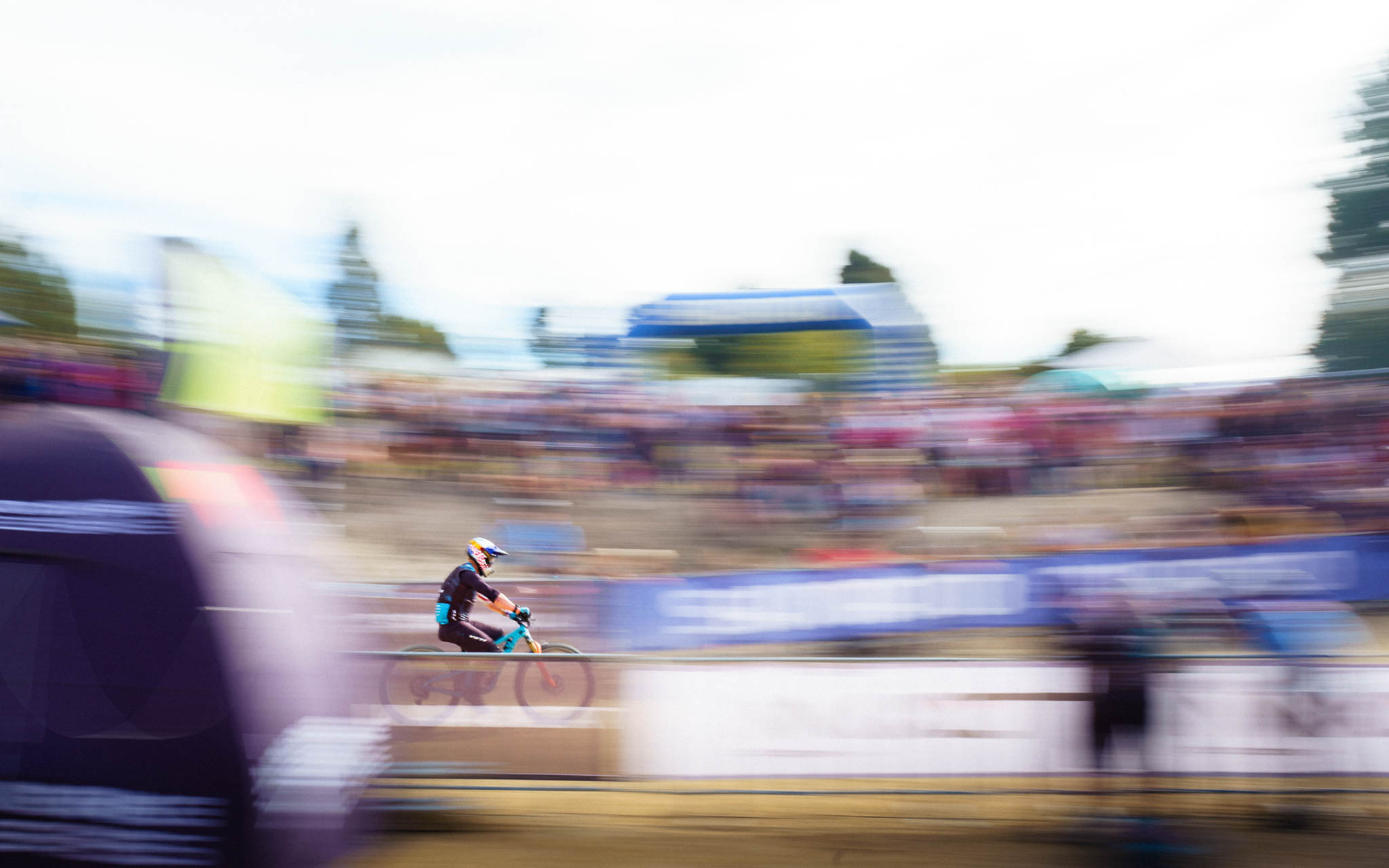
Of course, pro riders on pro teams were not subject to this qualification system. But privateers and punters like myself were. Like any discipline, you can’t simply decide to enter an international level race; you need to accumulate points by doing well at qualifier rounds. There are very few qualifier rounds here in Australia compared to our Euro counterparts, but after some good results throughout the year, I was ranked in the top 70 elite women in the Global Rankings.
In previous years, this would be more than enough to send me through to the pro level circuit. However, because I didn’t technically have the new minimum number of points (125), I could only enter the Amateur race. The Amateur (or “Open”) races are now the sole qualifier events for EDR apart from National Championships. Nonetheless, despite this disappointing technicality devised by the UCI at the eleventh hour (which ended up cutting nearly forty percent of the elite women’s field), I was still eager to hit the trails at the gravity heaven that is Maydena.
Training for EDR
Training: or as I call it, ‘chrainin. Psychologists say that the positive feelings of a desired outcome actually come from the process leading up to the outcome, not the outcome itself. This has been paraphrased by the slightly cringe worthy maxim “it’s about the journey, not the destination.” Despite the cliché, I wholeheartedly agree with this. I actually enjoyed the training and preparation for the EDR as much as the race itself.
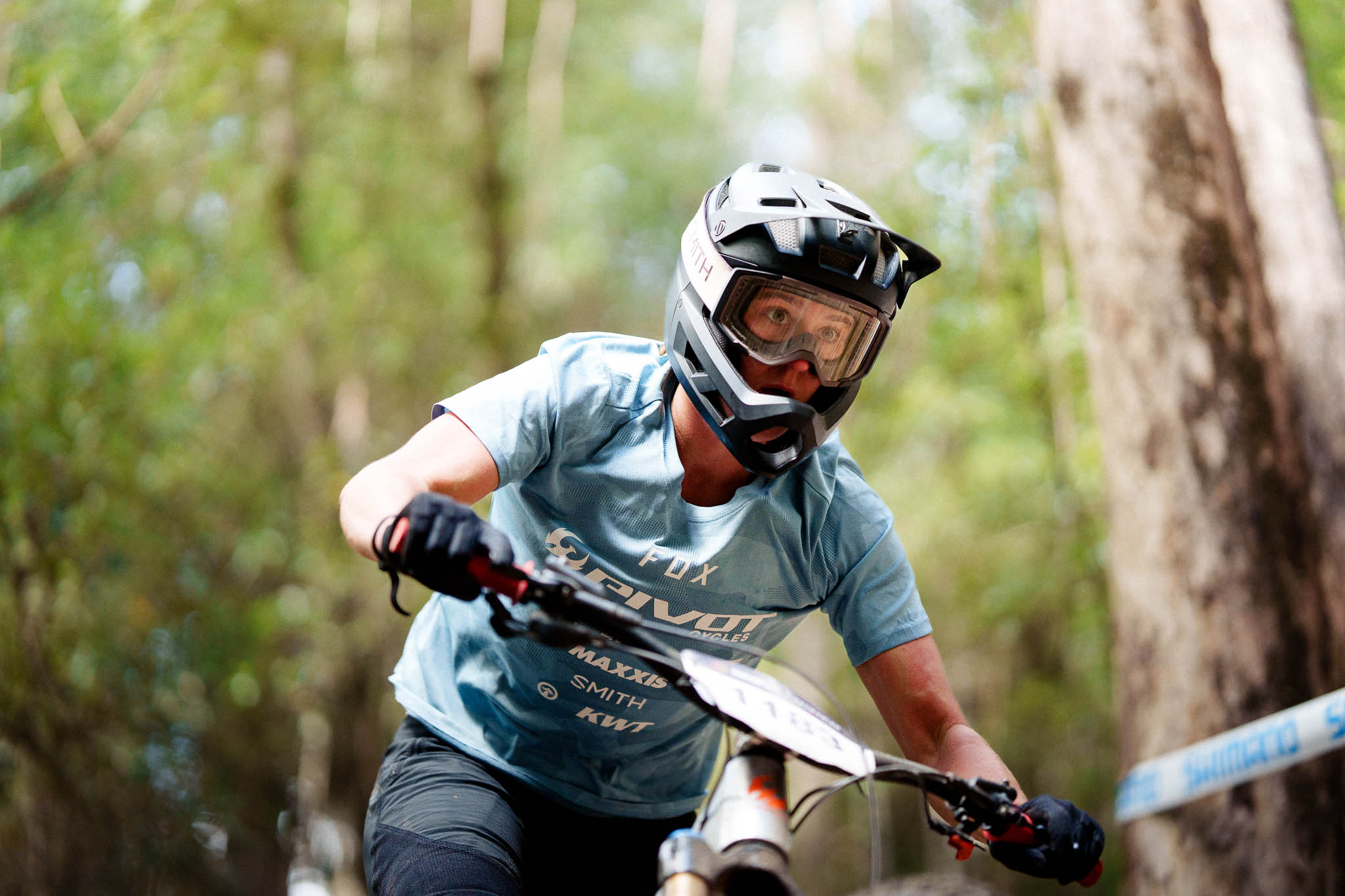
Training for enduro is rather complex. If you have the common perception that enduro is for unfit people who just want to ride descents – you are so wrong. While some general fitness, skills, and a go-getter attitude may see you through a Rocky Trail Superflow (the birthplace of many a keen racer!), you will need to specifically train for a proper enduro if you want to survive, let alone thrive. After hustling through multiple enduros throughout Australia, it became clear to me what’s required: you need the skills and strength of downhiller, the all-day endurance of a marathon rider, and the explosiveness of an XCO rider. Think of it as the triathlon of mountain biking. You don’t need to be the best at all of these things, but you need to be pretty good.
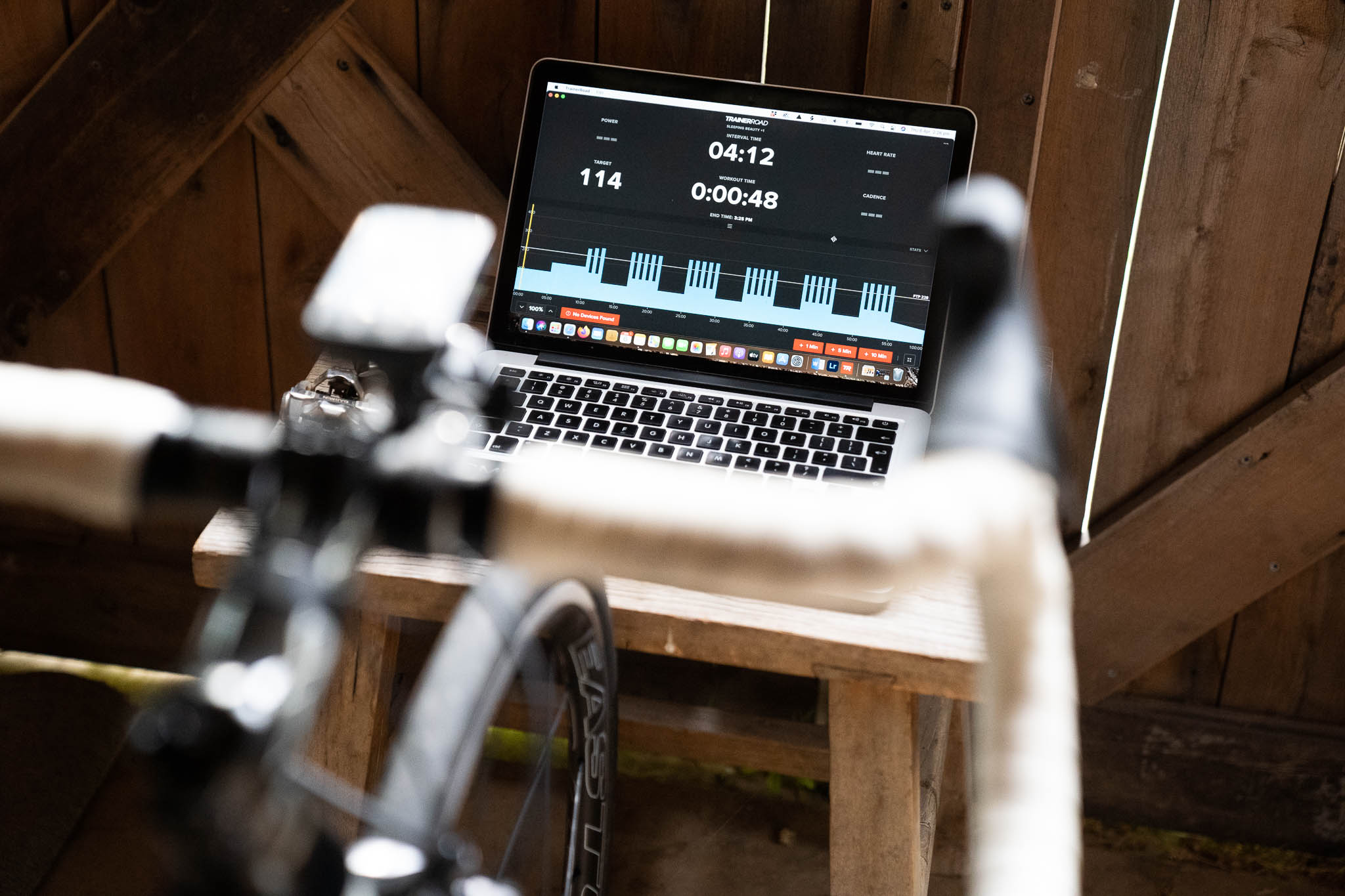
EDR stages include incredibly steep and terrifying sections, unlike anything you will find on mainland Australia. I knew this from multiple accounts from mates who had raced last year’s EWS, and my general experience at the Maydena Enduro Jam. So I prepared myself by simply riding the hardest trails I could find until they didn’t feel so hard, fine tuning my skills as I went. I’m lucky enough to live in the Victorian High Country, where places like Mystic and Mount Beauty are home to a couple of steep, long, and off-camber technical descents.
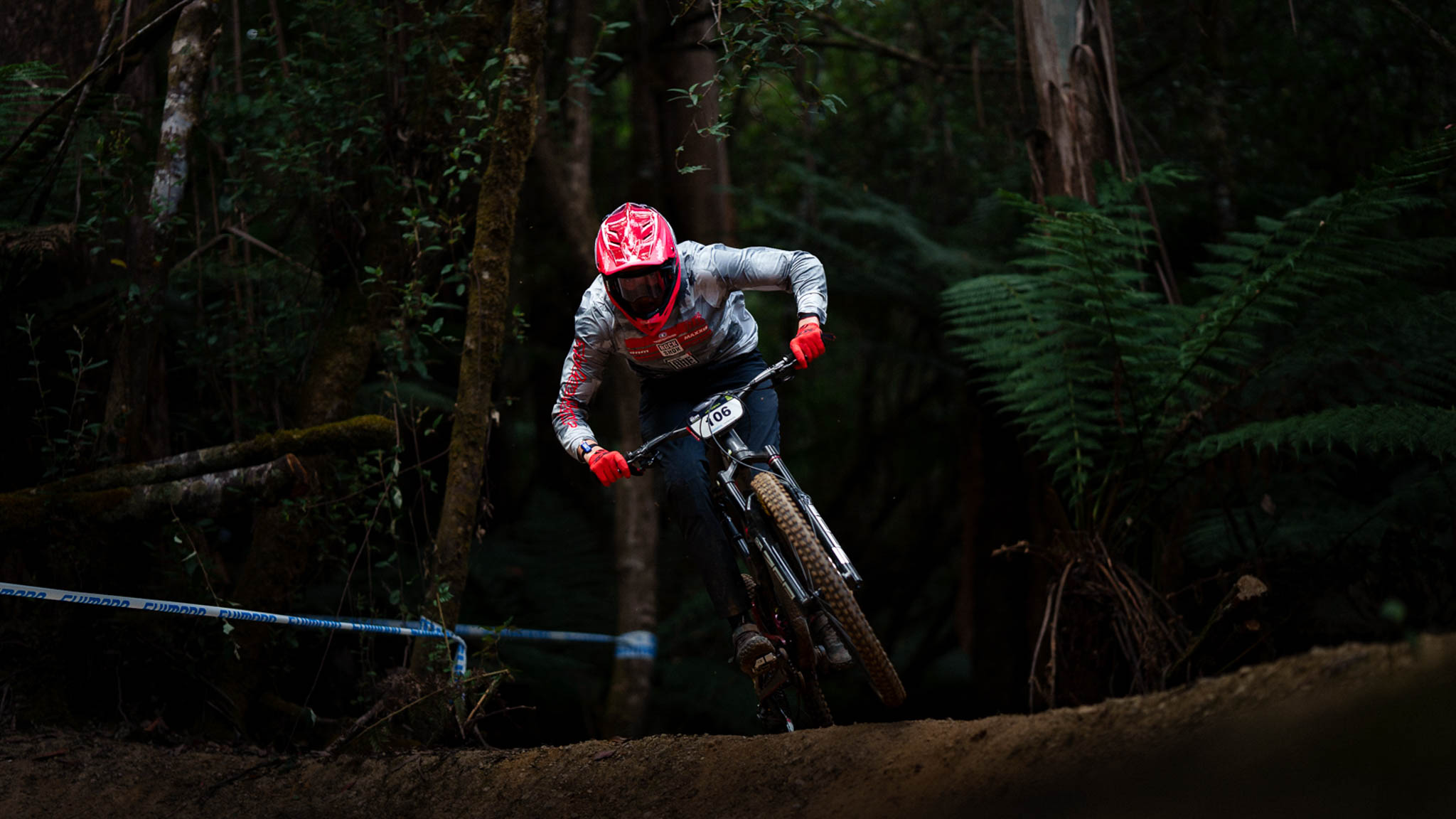
EDR stages are commonly 10-15 minutes long, so arm pump and quad burn are major things. I wanted my body to be unshakable, so I employed the advice of none other than downhill legend Sian A’hern to write my gym programs. I typically did 2-3 gym sessions a week, tapering off as the race was close. These gym sessions weren’t about blowing myself up with cross-fit style madness, but about lifting heavy and doing it consistently, followed by plenty of mobility and stretching.
Out on the bike(s), I was doing 2-3 interval sessions and 1-2 big endurance rides per week using the TrainerRoad Gravity plan. Some enduros will require up to 2000m of climbing and stretch across 5-6 hours, so big days on the big bike are essential. But most importantly, I was racing nearly every weekend in the months leading up to the EDR. There’s no training like racing, and enduro is no exception.
All the gear
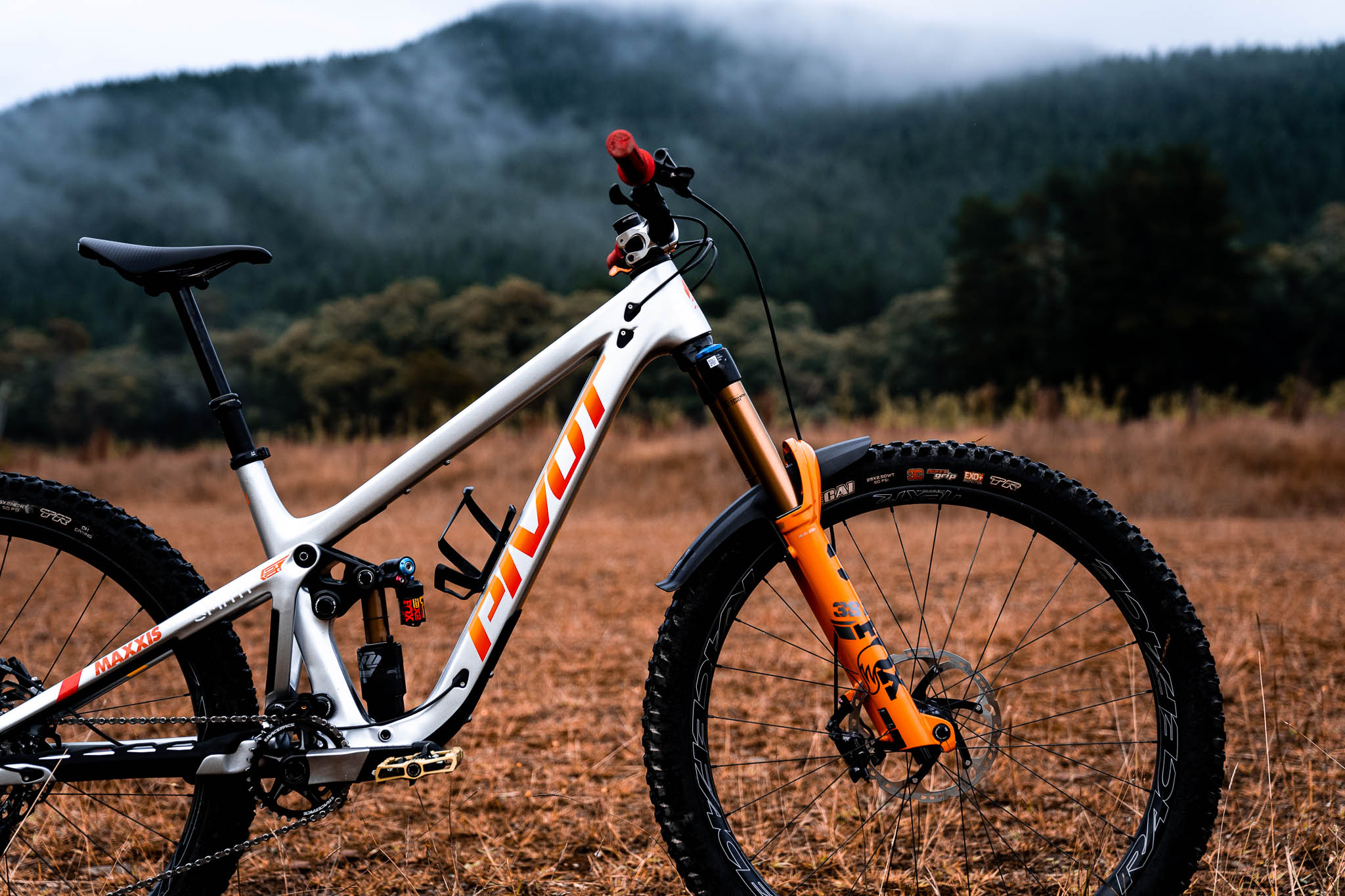
Embedded in the ‘spirit of enduro’ is the notion of self-sufficiency. Once the race has started, you are allowed very limited external support; you are not permitted a spare bike or wheel set, and in this way, wealthier pro teams don’t have an advantage over privateers on a budget. All your gear must be exceptionally reliable and carefully chosen, and you yourself must be a capable mechanic. If something goes wrong outside the designated pit-stop time slot (typically between Stages 3 and 4), you must fix it yourself.
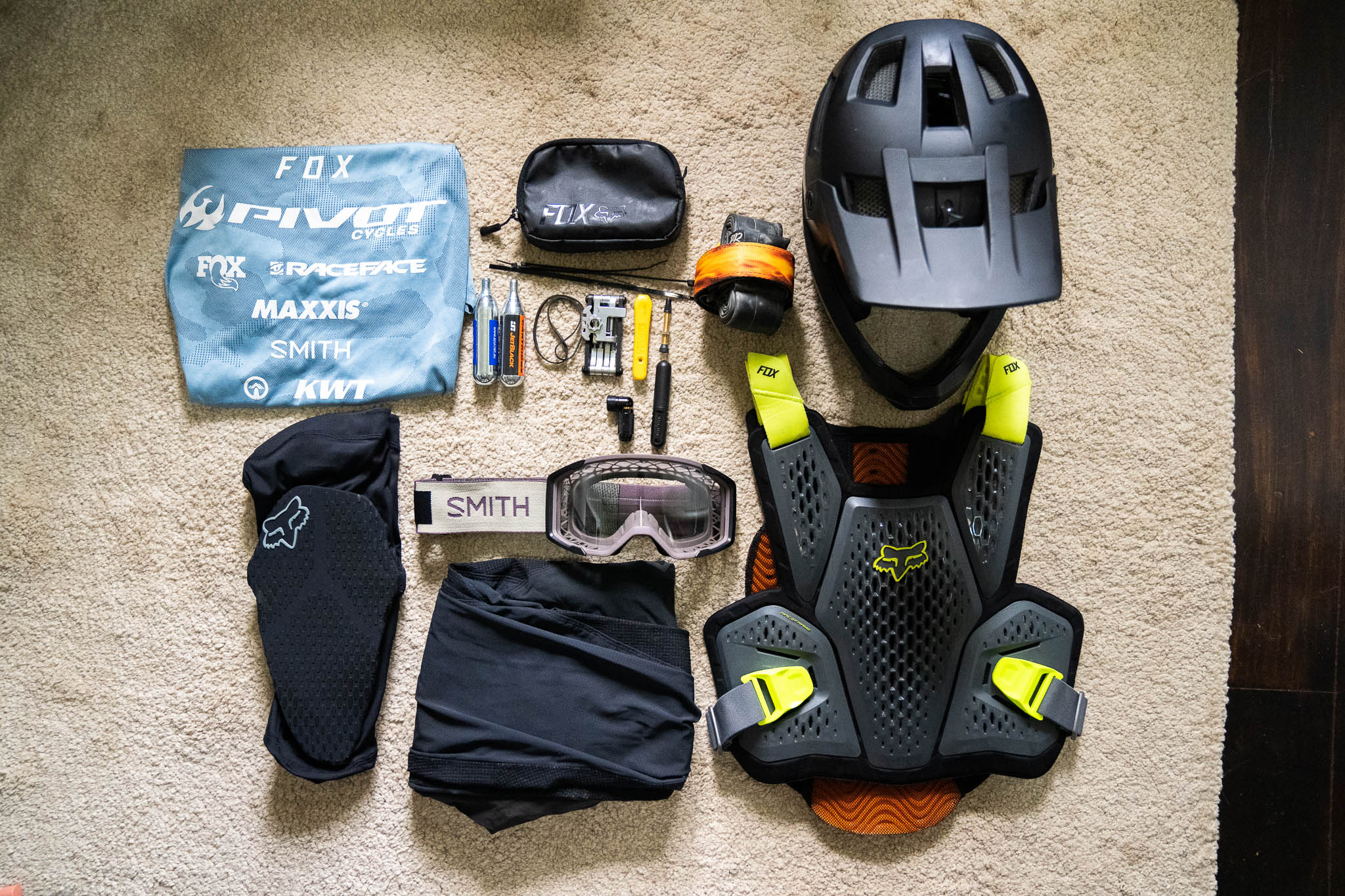
With all this in mind, I carried plenty of spares. These included a tube, tyre lever, two CO2 canisters, tyre plugs, zip ties (you can fix most problems in life with zip ties), a multitool with a chain breaker, a spare chain quick link, and UDH hanger. The majority of this was neatly wrapped together with a Backcountry Research Strap from Lead Out Sports. I was lucky enough to be wearing the hyper ventilated Mainline helmet and Rhythm goggles from Smith Optics, and a bunch of light weight but sufficiently protective gear from Fox Racing Australia
My bike was the famous Pivot Firebird, a tried and tested enduro bike with a slack geometry but incredible climbing capabilities. I had been racing a Pivot Switchblade all summer but opted for a Firebird to contend with the steeps of Maydena. This was a last minute decision, and I spent exactly 4 hours on the new bike before flying over to Tasmania. Obviously, I was anxious; how could I possibly feel that natural connection with a new bike in such a short time frame before the most important race of my year? But Pivot’s are built different. Their handling is so intuitive, and their geometry so balanced, that new riders will feel instantly secure. As practice day went on, I felt more and more at home on the Firebird.
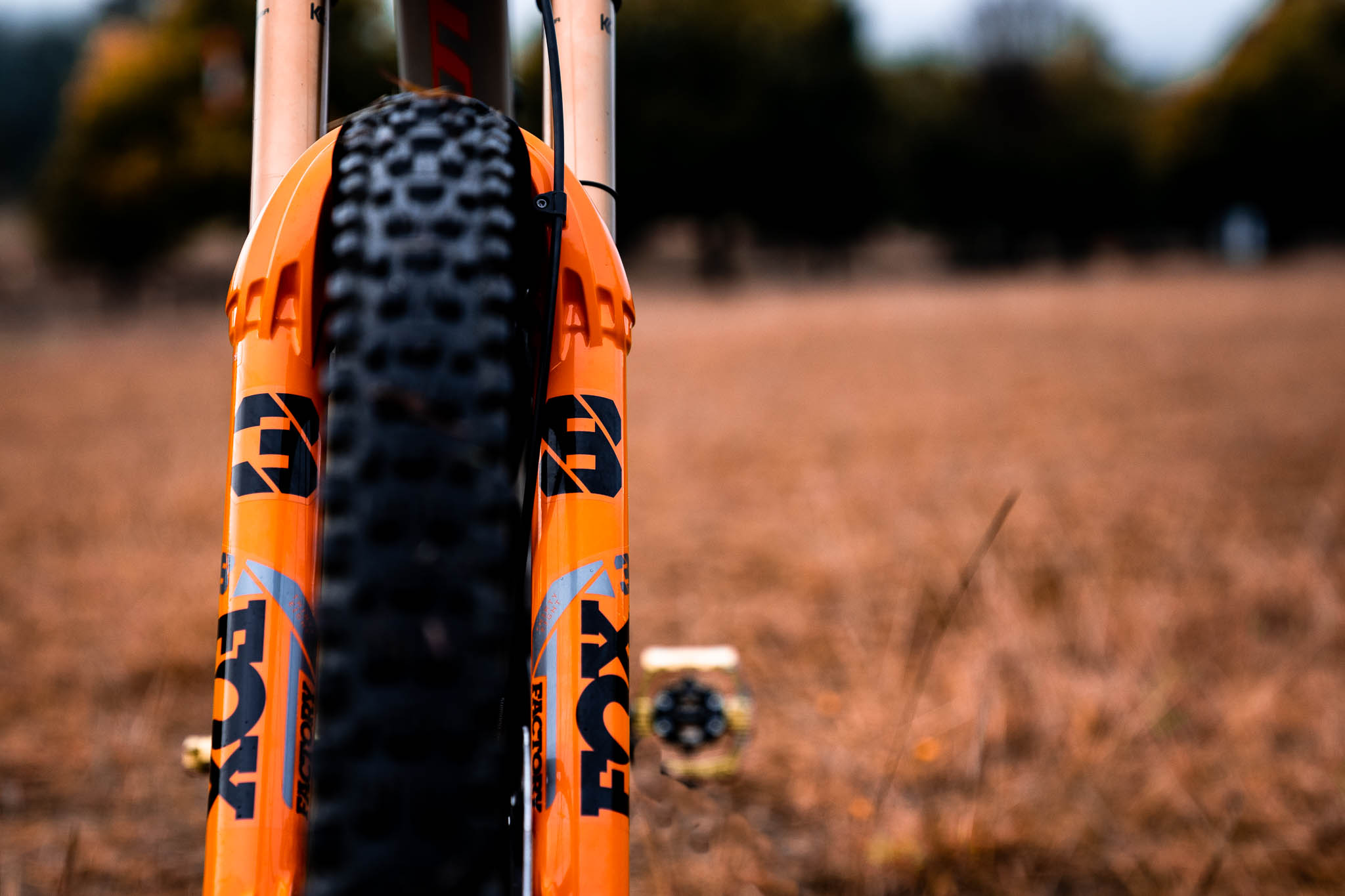
It was complete with Fox suspension, for which the friendly Fox team in the pits helped me tune to the conditions during practice. I ran a single volume spacer in my 38 forks to allow for maximum forgiveness on trails I had only seen once or twice. While you can set your suspension super quick and stiff for your home trails, it’s not a bad idea to dial it back to allow for spontaneous line choice and accumulated fatigue on long enduro courses.

I ran alloy Race Face Turbine bars with a 35mm rise to prop me back on steep sections, and FUNN Ripper pedals with a large, hugey-saving platform. To many onlookers’ surprise, I opted for the Race Face Next R 31 carbon wheels over my alloy Turbine wheels. I had been spending the majority of the season on the Next R wheels and never had an issue. I loved their low weight, stiffness, and acceleration, and after bashing them through some questionable lines, I had complete faith in their strength.
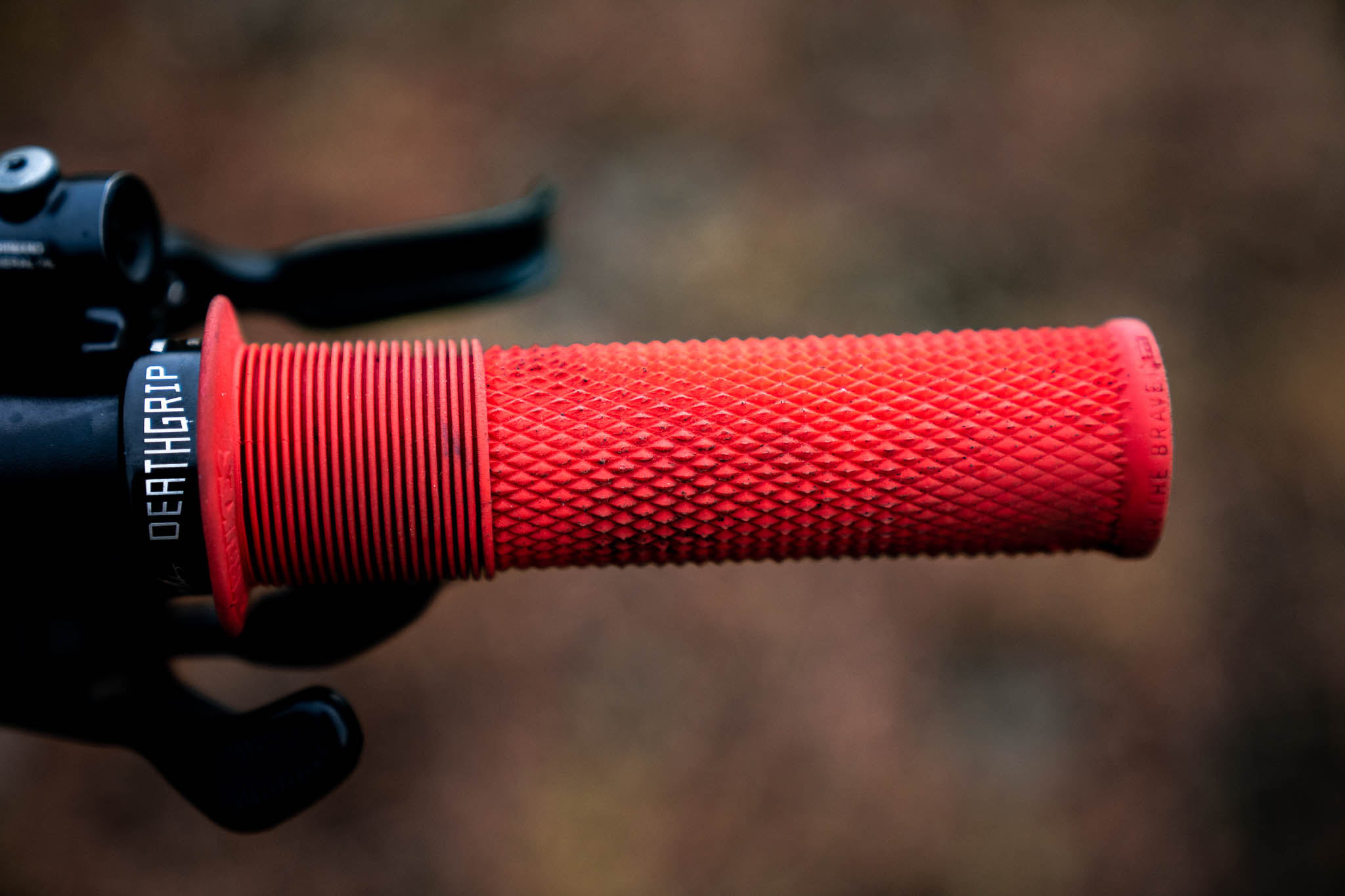
As for rubber, the only thing I trust on tough terrain is Maxxis’ Downhill casing. As usual, I ran the ultra grippy Assegai up front and the trusty Minion DHR II out back.
I also opted for the carbon Era cranks from Race Face over my alloy Atlas cranks. Why? Well, I just wanted to prove their strength and durability! I copped some heat from friends for running carbon cranks on an enduro bike and was warned they would fall apart and crack beneath me. But let it now be known: after running these cranks at races such as Cannonball, Mount Beauty, and now a World Cup at Maydena, and striking them against copious rocks along the way, these cranks have never failed me. Bravo Race Face!
Touch Down
While other racers arrived days earlier to get comfortable with the Maydena terrain, I was rolling straight into practice. Travelling with my spiritual family from Victoria, we were the unfortunate victims of a doof-doof at our motel in Hobart the night before practice. Now, you can either panic about disadvantages like this, or just get on with it. I chose to just get on with it. My career was not on the line (though the AMB Editor may beg to differ), so I sculled an instant coffee and jumped straight into the action aboard my beautiful steed.
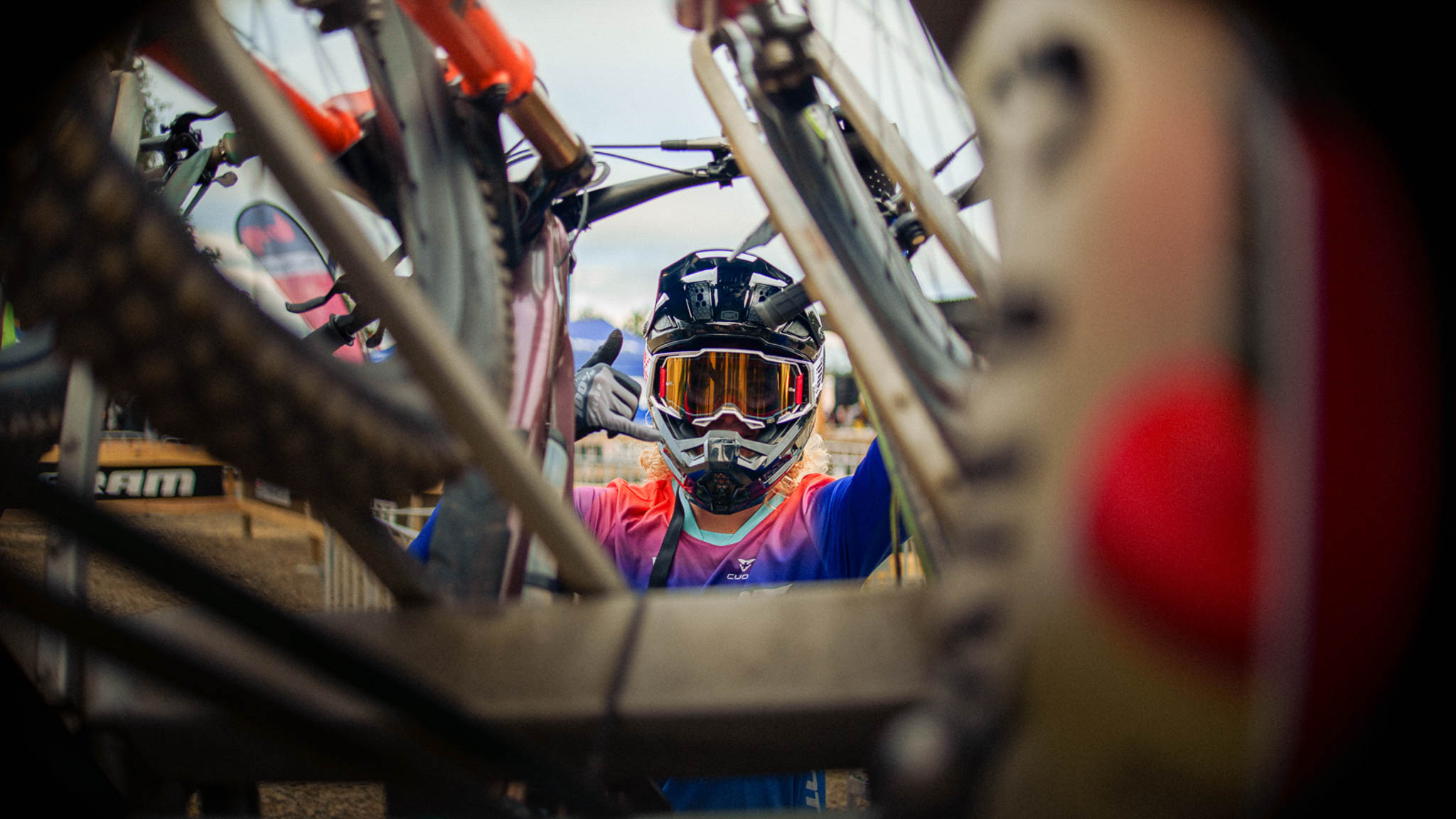
Arriving at Maydena, I was immediately star struck. Riders you only see on Instagram were suddenly standing in the shuttle line with us. Team tents were pitched across the field, and UCI banners were littered everywhere. It was a surreal moment when I was riding up to a stage behind my mates and looked back to see Richie Rude on my wheel.
And this is what’s so great about enduro. It’s the perfect blend of good times and elite racing. Maydena nailed it with an electric atmosphere – complete with a DJ in the middle of the woods – and an impressively organised event. We knew exactly where and when we needed to be at all times, and if we didn’t, help was readily available. Even spectators received a personal guide to get them to the stages on race day; complete with cow bells and free beer, the spectating at Maydena was as good as the racing itself.
Practice
The Open course comprised of 5 stages with 1 shuttle at the start to transport riders to the highest point in the park. The Pro course comprised of 6 stages, with one extra shuttle at the end of the day. All other stages were ridden to, using several groomed climbing trails at Maydena.
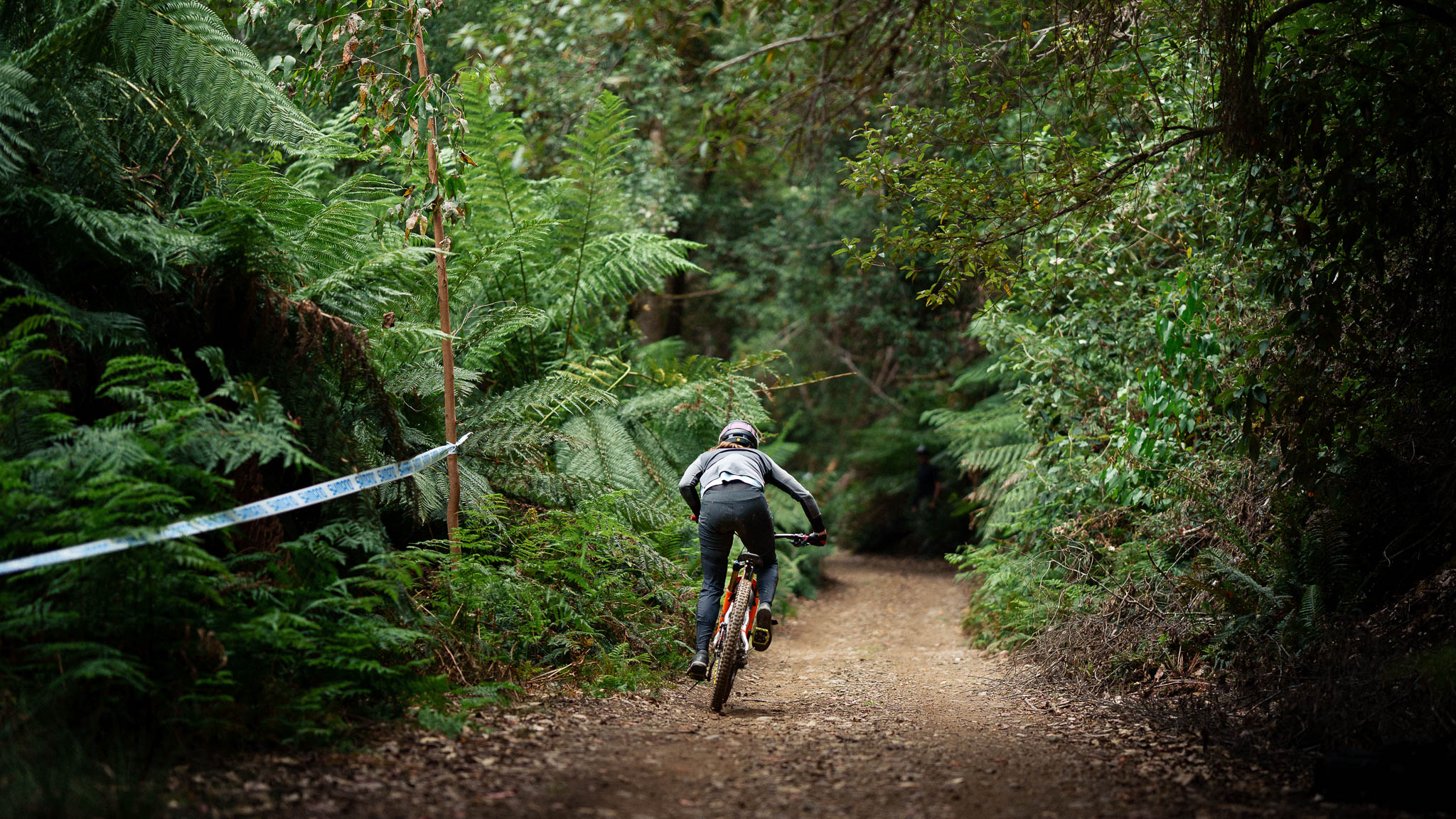
Traditionally in enduro, you only have one practice run on each stage; once you drop into a stage, you can push back up to session features, but you cannot restart the stage. The UCI continued this rule and required us to ride to the majority of stages during practice as opposed to being shuttled to them. This meant we were climbing 1200m each day (fully kitted up with DH tyres and full faces), for both practice and racing. Glad I did those big training rides!
I followed a few friends around during practice, but mostly rode the trails on my own. I’ve learned that if you follow someone down a trail, it will build confidence, but you also don’t memorise the track as well. Having to figure it out on your own helps solidify the course in your memory bank. I opted not to use a GoPro, a regrettable decision which I’ll elaborate on later.
Racing
After a great night’s sleep following the departure of our techno-loving neighbours, we arrived at Maydena for race day with an hour to spare. The check-in was relaxed, with the UCI’s super friendly staff giving us timing chips, a fun little interview for the spectators, and sending us on our way to Stage 1.
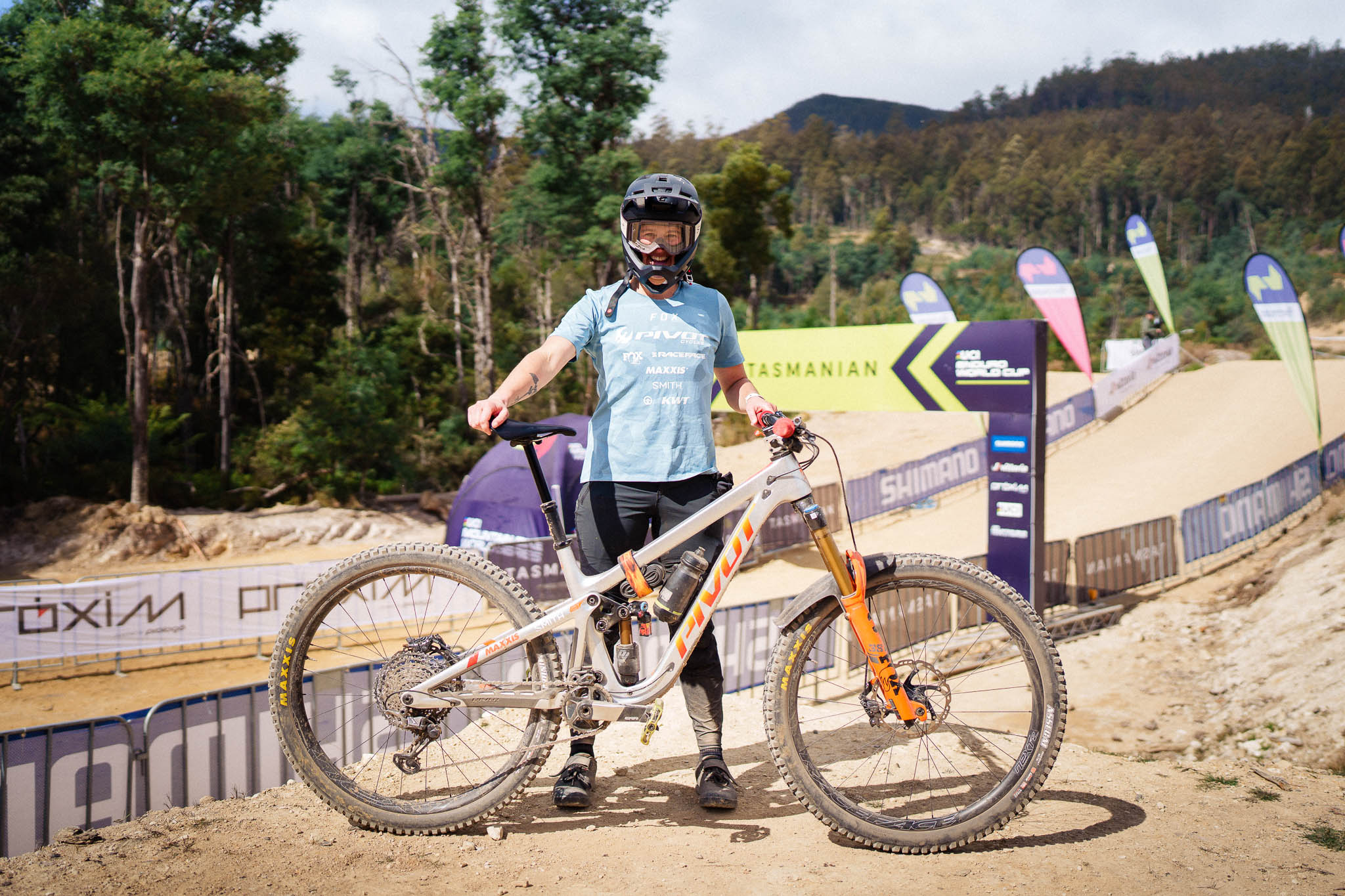
Jumping off the warm shuttle bus into Stage 1 was a rude awakening however. While it may be a comfortable temperature in the event village, the summit of the bike park is an icy peak. I did a series of push-ups and squat jumps while awaiting my turn to drop, knowing the intense burn that was to ensue down the longest stage of the race.
Was I nervous? Without sounding cocky, I didn’t feel any more nerves than at a local club round. I absolutely love the raw and natural trails of Maydena, and I was excited to hook into them aboard my shiny new Firebird. Despite a strong contingency of Aussie and international riders eager to win some UCI points, I was honestly just stoked to be there. Admittedly, as my brakes faded towards the end of the opening stage, so did my stoke; but it promptly rose again during the next liaison through the dense and magical forest of remote Tasmania.
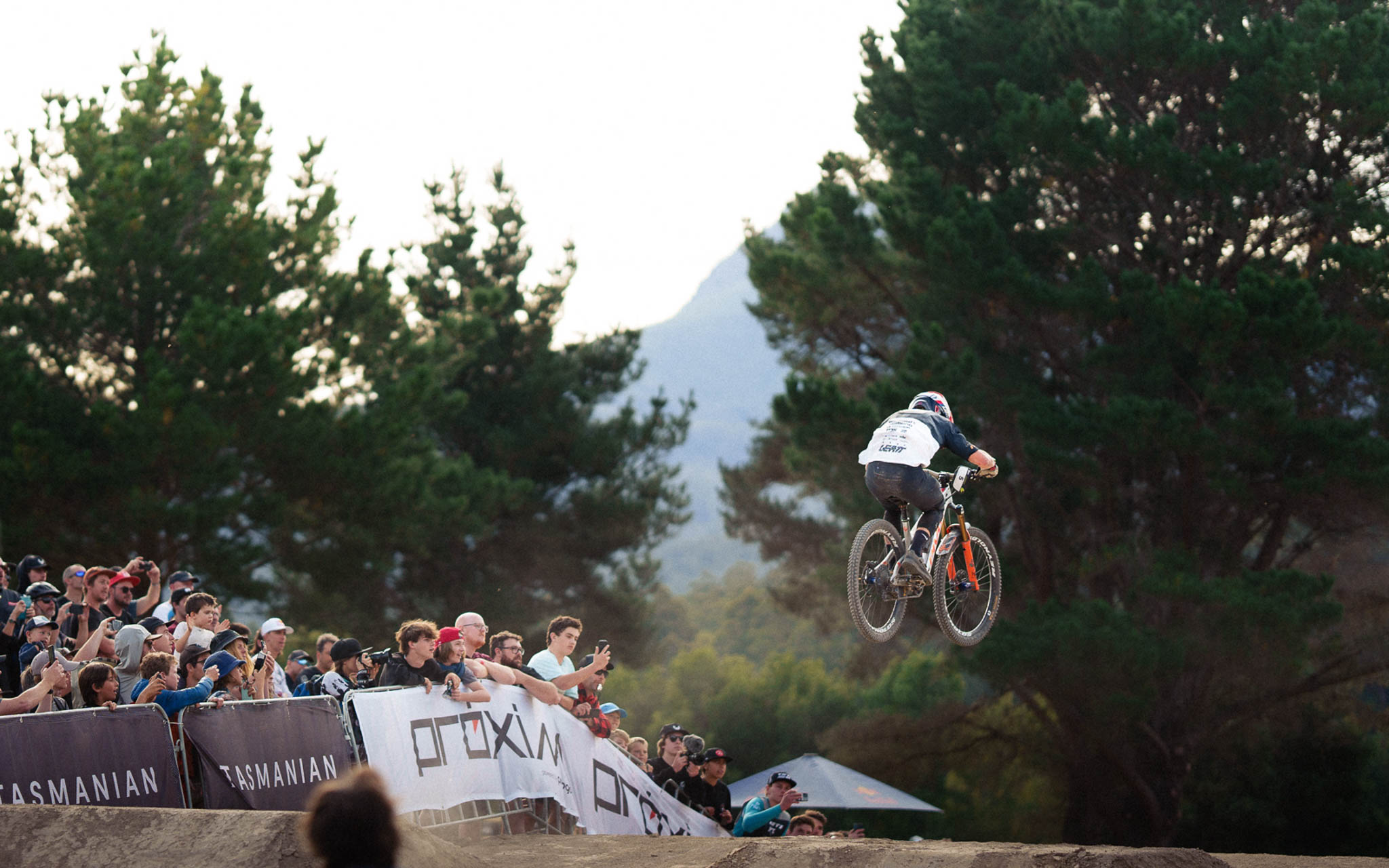
Enduro stages at the world level are designed to test the strength and skill of riders across varying terrain, combining all the assets of a great rider from line choice to sprint power. The stages at Maydena did just that. From steep loamers to punchy fire-roads, Maydena threw everything at us.
Each stage became more and more physical as the day wore on, and each liaison took a little longer. While still keeping an eye on the live results, I tried to stay focused on each task at hand. There’s small margin for error at Maydena and forgetting your lines can send you straight into the bunting. But aside from a few late brakes and foot-out moments, I was able to keep it rubber-side-down to the finish, claiming a bronze medal along the way.
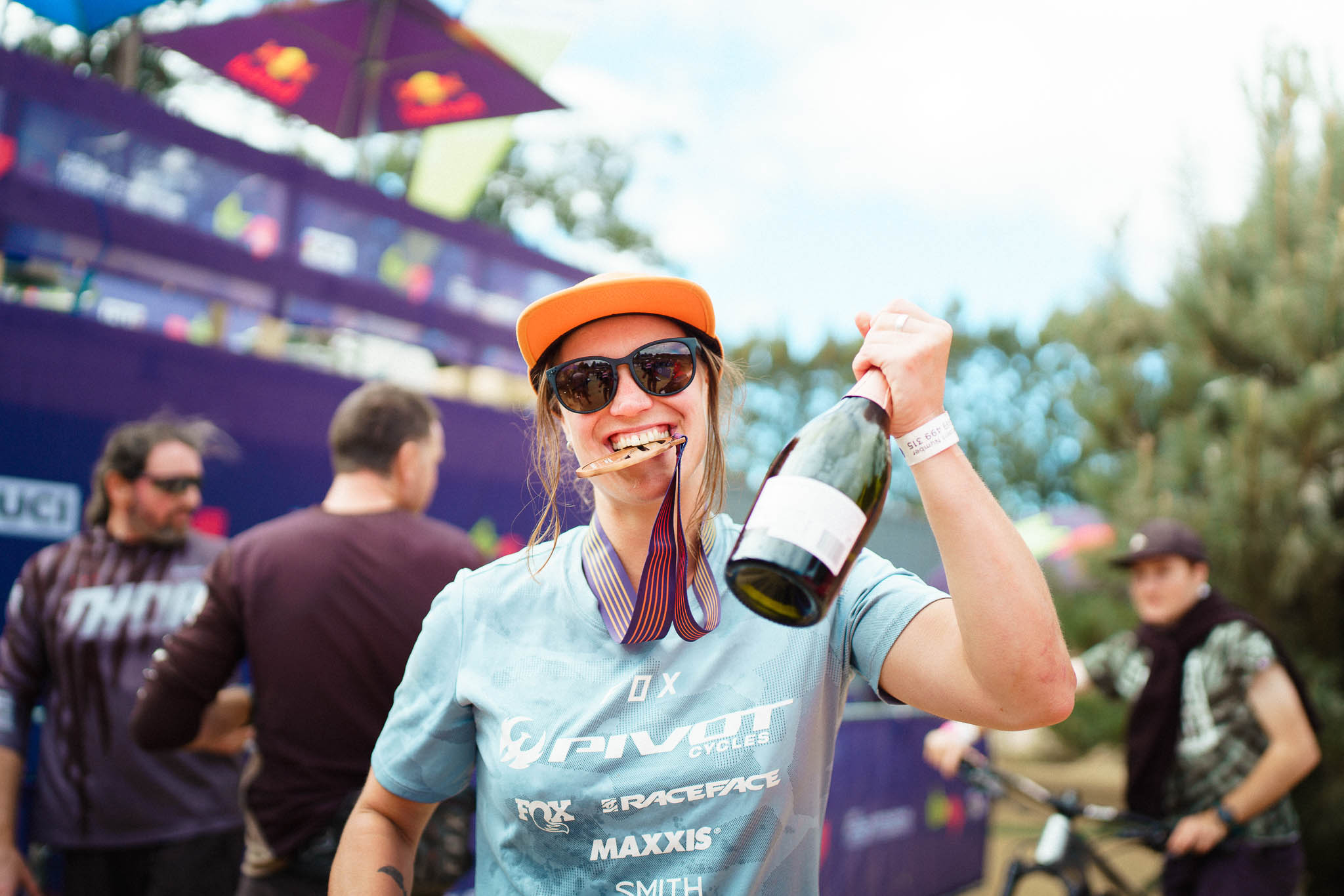
It was at the finish line that the sense of achievement started to sink it. Attempting any race at Maydena is a daunting task, let alone a World Cup course. It’s definitely not something I would have been capable of completing several years ago, and it took countless hours of training and practice to approach this race with confidence. As I sat down with friends for a celebratory beverage, plans were already swirling for the next World Cup adventure.
What I’d do differently…
The Maydena EDR was also a learning experience unlike any other, and there are two major things I’d do differently. Firstly, I’d wear a GoPro during practice regardless of the inconvenience. This is common practice for pro riders, and perhaps I was too casual during practice. Having this footage would have allowed me to study the tracks the night before, and probably eliminated many of the mistakes I made on race day.
Secondly, I would not fly in the night before practice! Given the amount of airport delays in this day and age, this was a serious error. I didn’t arrive at my accommodation until 11pm, and had to wake at 6:30am for practice. Next time I will arrive at least 2 days out to allow for delays, doof doofs, and mechanical tweaking. Riders were permitted on the non-race tracks all week at Maydena, which would have been a great opportunity to get my suspension dialed before practice.
Apart from this, I think my preparation and attitude was pretty spot on. I know it’s a cliché to “just have fun,” but this is honestly the number one prerequisite for a good day at an EDR.
